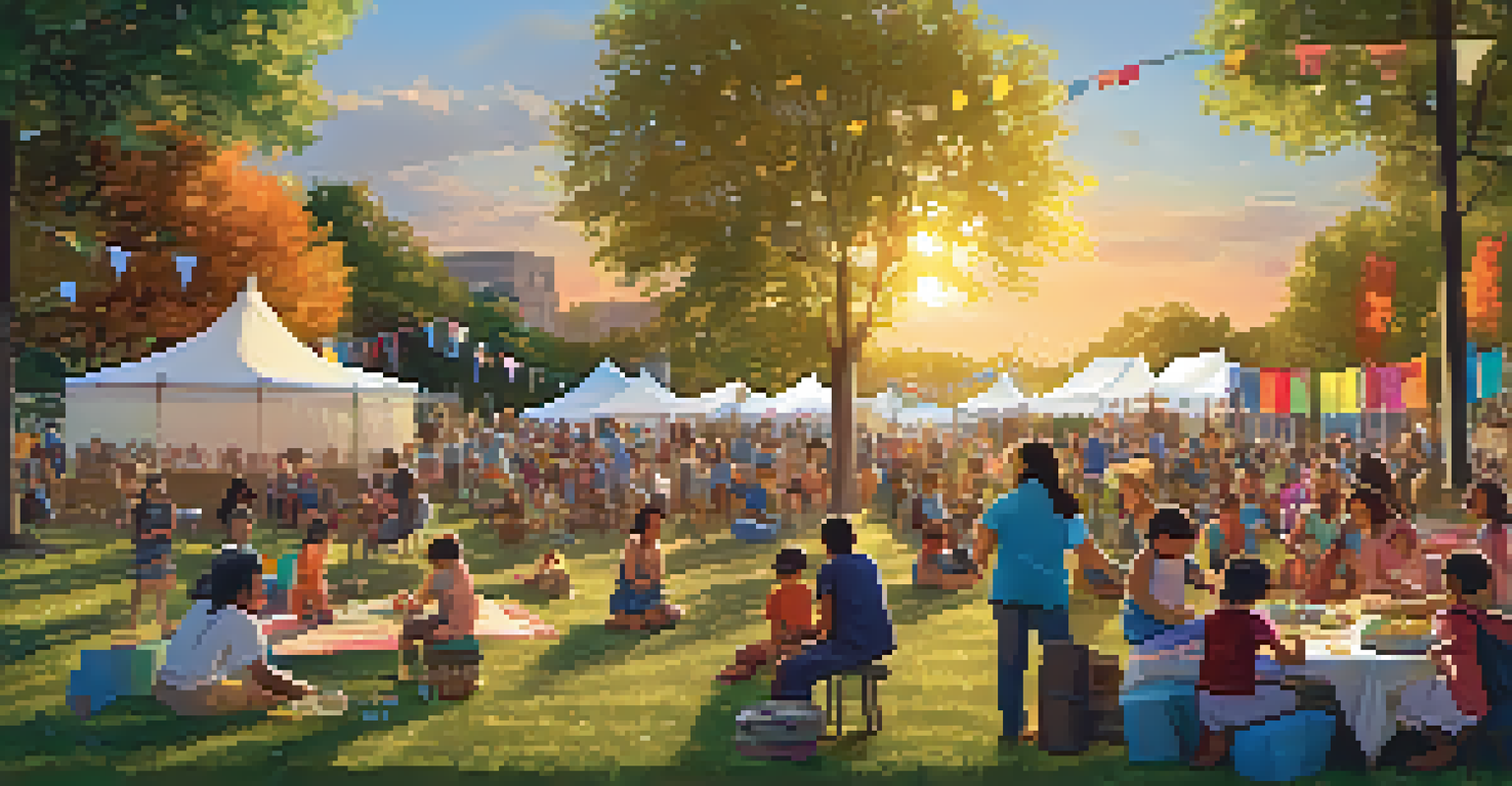Economic Impacts of Gentrification on Local Communities

Defining Gentrification and Its Economic Context
Gentrification is often described as the transformation of a neighborhood through the influx of wealthier residents, leading to rising property values and changes in the local culture. It typically occurs in urban areas where housing markets are under pressure. Understanding this process is crucial, as it has significant economic implications for both new and existing residents.
Gentrification is a complex process that can lead to both revitalization and displacement, often at the same time.
While gentrification can lead to neighborhood revitalization and improved infrastructure, it also raises questions about the displacement of long-term residents. These individuals often find themselves unable to afford rising rents or property taxes, leading to economic strain. The balance between development and community preservation is a key aspect of this complex phenomenon.
To better grasp the economic impacts of gentrification, it's essential to examine the various stakeholders involved. Investors, local businesses, and residents all play a role, and their interests often conflict. This dynamic creates a tapestry of economic outcomes, some beneficial and others detrimental, shaping the future of urban landscapes.
Positive Economic Impacts of Gentrification
One of the most frequently cited benefits of gentrification is the increase in local property values. As neighborhoods become more desirable, property owners often see their investments appreciate significantly. This can lead to a wealthier tax base for local governments, providing more funding for public services and amenities.

Gentrification can also attract new businesses to the area, ranging from trendy coffee shops to upscale boutiques. These establishments create jobs and can invigorate the local economy, leading to a vibrant community atmosphere. The influx of new residents often brings with it a demand for diverse goods and services, further stimulating economic growth.
Gentrification Alters Neighborhoods
Gentrification transforms neighborhoods through an influx of wealthier residents, impacting property values and local culture.
Moreover, improvements in infrastructure and public services, such as parks and transportation, often accompany gentrification. These enhancements can improve the quality of life for all residents, contributing to a more vibrant and engaged community. While the benefits may not be evenly distributed, overall economic activity tends to increase in gentrifying neighborhoods.
Challenges to Long-Term Residents During Gentrification
While gentrification can breathe new life into communities, it often comes at a cost to long-term residents. As property values rise, many find themselves facing skyrocketing rents and taxes, pushing them out of their homes. This displacement can lead to significant emotional and economic stress for families who may have lived in the area for generations.
The challenge lies in balancing the interests of new businesses with those of local entrepreneurs.
The loss of affordable housing is a critical issue tied to gentrification. Many low-income residents struggle to find housing that fits their budget as more affluent individuals move in. This can lead to a homogenization of neighborhoods, where diversity—both cultural and economic—is diminished.
Additionally, long-term residents often feel alienated from their neighborhoods as new businesses cater to wealthier clientele. The community's original character may change, leading to feelings of resentment and frustration among those who have lived there for years. This disconnect highlights the need for policies that protect vulnerable populations during periods of economic change.
The Role of Local Government in Gentrification
Local governments play a pivotal role in the gentrification process, as their policies can either mitigate or exacerbate economic disparities. Zoning laws, tax incentives, and development regulations can significantly influence how neighborhoods evolve. Understanding this role is essential for crafting effective solutions to the challenges posed by gentrification.
For instance, some cities have implemented policies aimed at increasing affordable housing stock, which can help counteract displacement. Inclusionary zoning, for example, requires developers to include a percentage of affordable units in new projects. Such measures can create more balanced communities where residents of all income levels can thrive.
Challenges for Long-Term Residents
Long-term residents often face displacement due to rising rents and changing neighborhood dynamics as gentrification progresses.
However, the effectiveness of these policies often depends on political will and public support. Engaging community members in the decision-making process is vital for ensuring that policies reflect the needs of all residents. Ultimately, a collaborative approach can lead to a more equitable outcome in the face of gentrification.
Community Responses to Gentrification
As gentrification progresses, many communities have taken proactive measures to address its impacts. Grassroots organizations often emerge to advocate for the rights of long-term residents, pushing for policies that protect affordable housing. These groups play a crucial role in raising awareness and fostering dialogue about the complexities of neighborhood change.
Community-based initiatives can also help preserve the cultural identity of neighborhoods facing gentrification. Events celebrating local history, art, and culture can create a sense of belonging among residents. By engaging individuals in these efforts, communities can work towards maintaining their unique character amidst economic shifts.
In some cases, residents have banded together to form cooperatives or community land trusts, which prioritize affordable housing and local ownership. These innovative approaches can help ensure that the benefits of gentrification are shared equitably among all community members. Ultimately, community resilience is a powerful tool in navigating the challenges of gentrification.
The Impact of Gentrification on Local Businesses
Local businesses are often profoundly affected by the gentrification process, experiencing both opportunities and challenges. As new residents move in, there may be an increased customer base for existing businesses, which can lead to growth and prosperity. However, this influx can also lead to rising rents that threaten the survival of long-standing establishments.
Many small businesses struggle to keep pace with the changing economic landscape, often being priced out of their neighborhoods. This loss can lead to a decrease in the unique character that originally attracted new residents. The challenge lies in balancing the interests of new businesses, which may cater to wealthier clients, with those of local entrepreneurs.
Role of Local Government Matters
Local governments can mitigate or exacerbate gentrification's effects through policies like affordable housing initiatives and community engagement.
Moreover, the changing demographics can shift consumer preferences, leading businesses to adapt their offerings. This can create tension between the needs of existing residents and the desires of newcomers. Finding ways for both groups to coexist is essential for fostering a vibrant local economy.
Long-Term Solutions for Equitable Development
Addressing the economic impacts of gentrification requires a multifaceted approach that prioritizes equity and inclusion. Policymakers must consider initiatives that promote affordable housing, support local businesses, and foster community engagement. Long-term solutions should focus on creating an environment where all residents can thrive, regardless of their income level.
Partnerships between local governments, community organizations, and residents can lead to innovative solutions. Collaborative efforts can result in policies that not only mitigate displacement but also enhance community resilience. By working together, stakeholders can create neighborhoods that reflect the needs and values of all residents.

Ultimately, the goal should be to create a balanced approach that acknowledges the benefits of development while safeguarding the interests of long-term residents. Ensuring that gentrification does not come at the expense of community identity is crucial for fostering sustainable urban growth. Through thoughtful planning and community engagement, cities can navigate the complexities of gentrification more effectively.